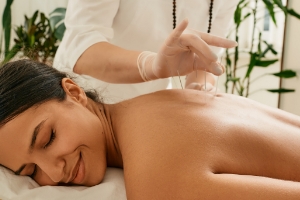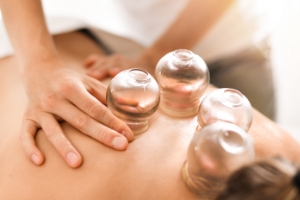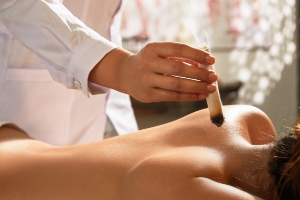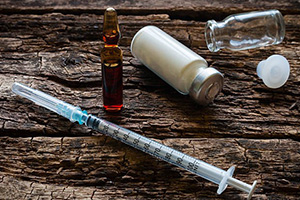No products in the cart.
Osteo 8
CLINICAL APPLICATIONS
- Osteoporosis with decreased bone strength, mass, and density
- Individuals with risk factors of osteoporosis, such as menopause, old age, and use of tobacco, alcohol, and drugs
- Maintenance for healthy and strong bones
- Soreness, weakness, and pain in the bones, lower back, and knees
- Inability to stand for a prolonged period
- Pain or soreness that is aggravated by weight-bearing activities
- Recovery from bone fracture and broken bones
WESTERN THERAPEUTIC ACTIONS
- Osteogenic effect of stimulating osteoblast proliferation and differentiation
- Osteoprotective effect of preventing and treating osteoporosis
- Increases absorption and utilization of calcium
- Increases bone mass and density
- Angiogenic effect of stimulating blood vessel formation, invigorating blood circulation, facilitating wound healing, enhancing tissue regeneration, and facilitating the healing of bone fractures
INGREDIENTS
- Dang Gui (Radix Angelicae Sinensis)
- E Jiao (Colla Corii Asini)
- Gou Qi Zi (Fructus Lycii)
- Gu Sui Bu (Rhizoma Drynariae)
- Gui Ban (Plastrum Testudinis)
- Lu Jiao (Cornu Cervi)
- Ren Shen (Radix et Rhizoma Ginseng)
- Xu Duan (Radix Dipsaci)
FORMULA EXPLANATION
Osteo 8 is a well-balanced formula designed for women and men of all ages who want to maintain healthy bones. It contains herbs that tonify qi, blood, yin, and yang. The primary function of the formula is to replenish the kidney’s vital jing (essence) to strengthen bones, increase bone density, and promote healing.
Most herbs in Osteo 8 enter the Kidney to revitalize the body and replenish jing (essence). Osteoporosis or weakness of sinews and bones results from Kidney and Liver deficiencies. According to traditional Chinese medicine, the Kidney stores the jing (essence) vital for strong bones, and the Liver stores blood and controls the sinews and tendons. If the Liver and Kidney are deficient, bone, ligaments, and joints become weak. Therefore, treatment of bone disorders requires tonification of the Liver and Kidney.
Lu Jiao (Cornu Cervi), one of the most effective and precious herbs, is the principal herb in Osteo 8. It tonifies Kidney yang, replenishes Kidney jing (essence), nourishes blood, and strengthens sinews and bones. Gu Sui Bu (Rhizoma Drynariae) and Xu Duan (Radix Dipsaci) are two herbs that tonify Kidney yang. Gu Sui Bu (Rhizoma Drynariae) and Xu Duan (Radix Dipsaci) strengthen the bones and are often used together to promote the mending of bones and relieve soreness, weakness, and pain of the bones. They are the best pair to heal fractured bones and other injuries such as contusions, sprains, and ligament injuries due to trauma.
Gui Ban (Plastrum Testudinis), Gou Qi Zi (Fructus Lycii), and E Jiao (Colla Corii Asini) are used to tonify the Kidney yin and jing (essence). Gui Ban (Plastrum Testudinis) nourishes the Kidney yin and strengthens the bones by filling the marrow with jing (essence). Gou Qi Zi (Fructus Lycii) tonifies the Liver and the Kidney yin to treat secondary symptoms such as dizziness, dryness, blurred vision, tinnitus, thirst, and night sweats. Neutral in property, it has a unique function to effectively nourish the different parts of the body without creating any stagnation. E Jiao (Colla Corii Asini), one of the essential herbs used in most antiaging formulas, tonifies blood and nourishes yin. Together, these three herbs replenish Kidney yin and jing (essence) to maintain healthy bones and treat weakness and soreness of the back, hips, and knees.
Finally, to enhance the overall wellness of the body, Ren Shen (Radix et Rhizoma Ginseng) and Dang Gui (Radix Angelicae Sinensis) are added to tonify qi and blood.
Most herbs in Osteo 8 enter the Kidney to revitalize the body and replenish jing (essence). Osteoporosis or weakness of sinews and bones results from Kidney and Liver deficiencies. According to traditional Chinese medicine, the Kidney stores the jing (essence) vital for strong bones, and the Liver stores blood and controls the sinews and tendons. If the Liver and Kidney are deficient, bone, ligaments, and joints become weak. Therefore, treatment of bone disorders requires tonification of the Liver and Kidney.
Lu Jiao (Cornu Cervi), one of the most effective and precious herbs, is the principal herb in Osteo 8. It tonifies Kidney yang, replenishes Kidney jing (essence), nourishes blood, and strengthens sinews and bones. Gu Sui Bu (Rhizoma Drynariae) and Xu Duan (Radix Dipsaci) are two herbs that tonify Kidney yang. Gu Sui Bu (Rhizoma Drynariae) and Xu Duan (Radix Dipsaci) strengthen the bones and are often used together to promote the mending of bones and relieve soreness, weakness, and pain of the bones. They are the best pair to heal fractured bones and other injuries such as contusions, sprains, and ligament injuries due to trauma.
Gui Ban (Plastrum Testudinis), Gou Qi Zi (Fructus Lycii), and E Jiao (Colla Corii Asini) are used to tonify the Kidney yin and jing (essence). Gui Ban (Plastrum Testudinis) nourishes the Kidney yin and strengthens the bones by filling the marrow with jing (essence). Gou Qi Zi (Fructus Lycii) tonifies the Liver and the Kidney yin to treat secondary symptoms such as dizziness, dryness, blurred vision, tinnitus, thirst, and night sweats. Neutral in property, it has a unique function to effectively nourish the different parts of the body without creating any stagnation. E Jiao (Colla Corii Asini), one of the essential herbs used in most antiaging formulas, tonifies blood and nourishes yin. Together, these three herbs replenish Kidney yin and jing (essence) to maintain healthy bones and treat weakness and soreness of the back, hips, and knees.
Finally, to enhance the overall wellness of the body, Ren Shen (Radix et Rhizoma Ginseng) and Dang Gui (Radix Angelicae Sinensis) are added to tonify qi and blood.
BACKGROUND
Osteoporosis is characterized by reduced bone mass density, leading to fractures after minimal trauma. Osteoporosis is becoming one of the more common disorders as the population ages and life expectancies increase. Osteoporosis occurs mainly in individuals between 51 to 75 years of age and is six times more common in women than men. There are numerous risk factors, including but not limited to aging, dietary habits, lifestyles, and family history. Chronic use of drugs also increases the risk of osteoporosis, such as thyroid supplements, corticosteroids, ethanol, tobacco, and heparin. Therefore, optimal prevention and treatment of osteoporosis require modification to diet and exercise and the use of herbal medicine.






